Have you received a compostable product or packaging and noticed two different labels – certified home compostable and certified industrially compostable?
These refer to the two composting methods: at home or in an industrial (commercial) facility. This article will break down the difference between commercial composting vs home composting, as well as the different certifications to look for.
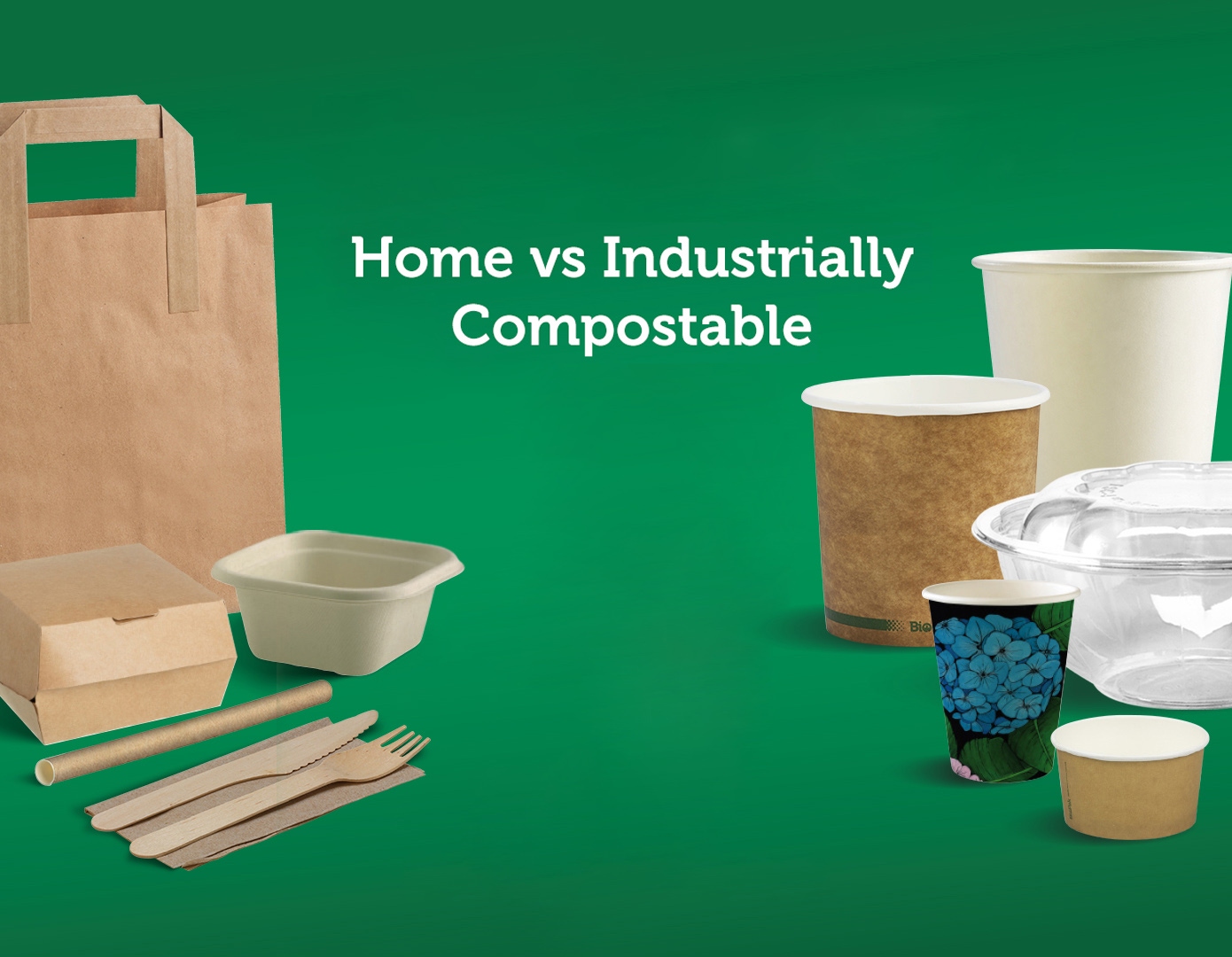

BioPak’s range of compostable packaging comes with two different certifications: certified home compostable (AS5810) and certified commercially compostable (AS4736) – more on these below.
But First, What Is Composting?
Like nature’s version of recycling, composting is a process that breaks down organic matter through the use of fungi, bacteria, insects, worms and other organisms to create a nutrient-dense ‘compost’. This compost can then be used as a powerful fertiliser and soil conditioner.
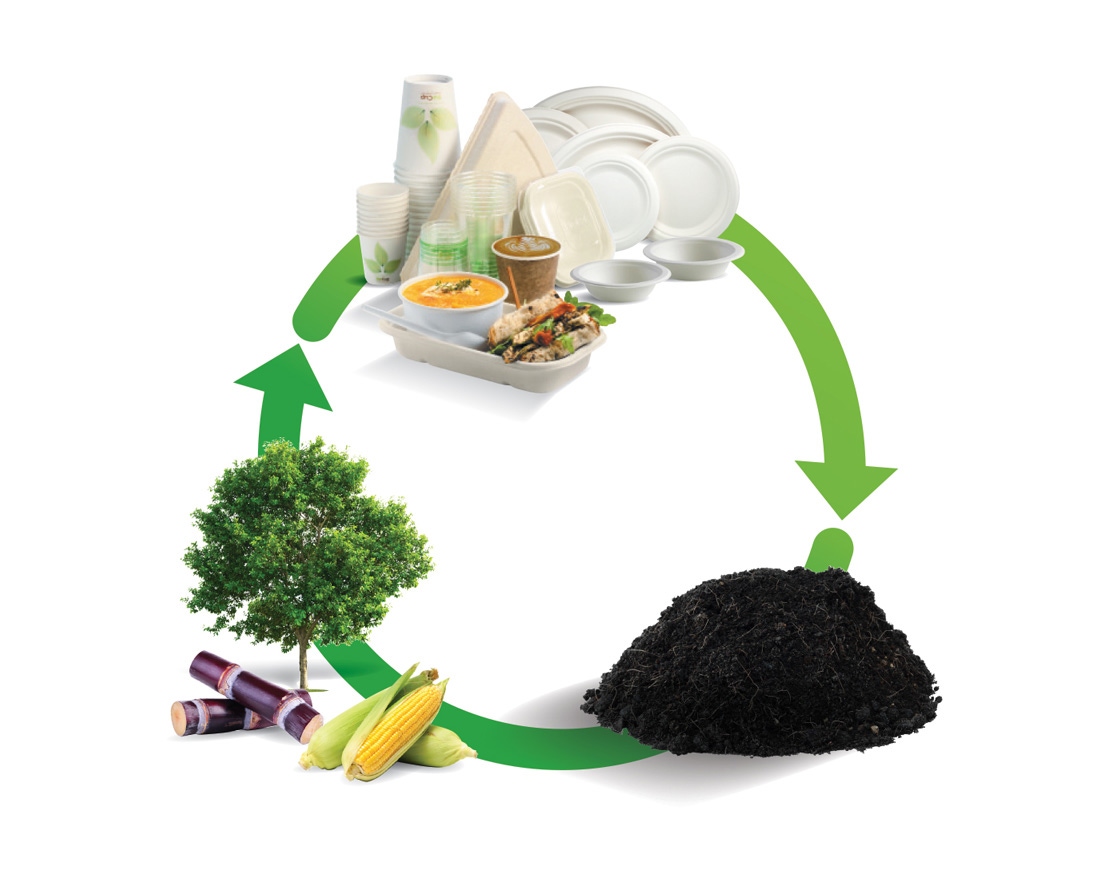

Industrial Composting vs Home Composting
Both forms of composting create a nutrient-rich compost, only they achieve it in different ways.
At the simplest level, home composting produces nutrient-rich compost in your backyard, using a vessel like a traditional compost bin, tumbler or vermicompost (worm farm). Home composting breaks down organic household waste like food scraps, grass clippings and leaves. This occurs over a period of months, sometimes years. Organic waste typically takes longer to break down in a home compost as the conditions aren’t as controlled as in an industrial facility (for example, the conditions and temperatures will not break down products like PLA bioplastic, which need an industrial facility to rapidly break down). What’s more, meat, fish and dairy aren’t always recommended in a home compost bin as they can attract pests and vermin.
That’s where we turn to industrial composting – a multi-step, closely monitored composting process with measured inputs of water, air, temperature, carbon and nitrogen-rich materials. There are many types of commercial composting, such as turned windrow, aerated static pile and in-vessel. Each of these facilities optimises the decomposition process by controlling conditions, like shredding material to the same size or controlling the temperature and oxygen levels. These measures ensure rapid biodegradation of the organic material to high-quality compost. Because of the controlled settings (industrial composting is able to sustain the temperature and stability of the compost more rigorously), you can generally compost a broader range of materials and products.
Different Compost Certifications To Look For
Now you know the difference between home and commercial composting, when do you use each method?
For starters, packaging must have certifications to ensure that it’s actually compostable. Simply labelling a product “compostable” does not specify how a product can be composted (it may only be able to decompose in a commercial facility or have components such as inks and glue that negatively impact the compost quality).
That’s why you should always look for compostable certifications to Australian and European standards. Not only that, you should look for the company’s unique certification licence number beneath,
Learn more about why certifications matter.
Here are the key logos you should look for.
Home Compostable to AS5810 Australian Standards
The Australian Bioplastics Association (ABA) launched the Home Compostable Verification Scheme throughout Australia and New Zealand. The Home Compostable logo means you can throw the packaging material into your backyard compost bin and it’ll biodegrade.
To be certified compostable and carry the Home Compostable logo, suitable biopolymer materials must undergo a costly and stringent test regime outlined by AS 5810-2010 and be carried out by recognised independent and accredited laboratories. Learn more about this home composting certification on the ABA website.
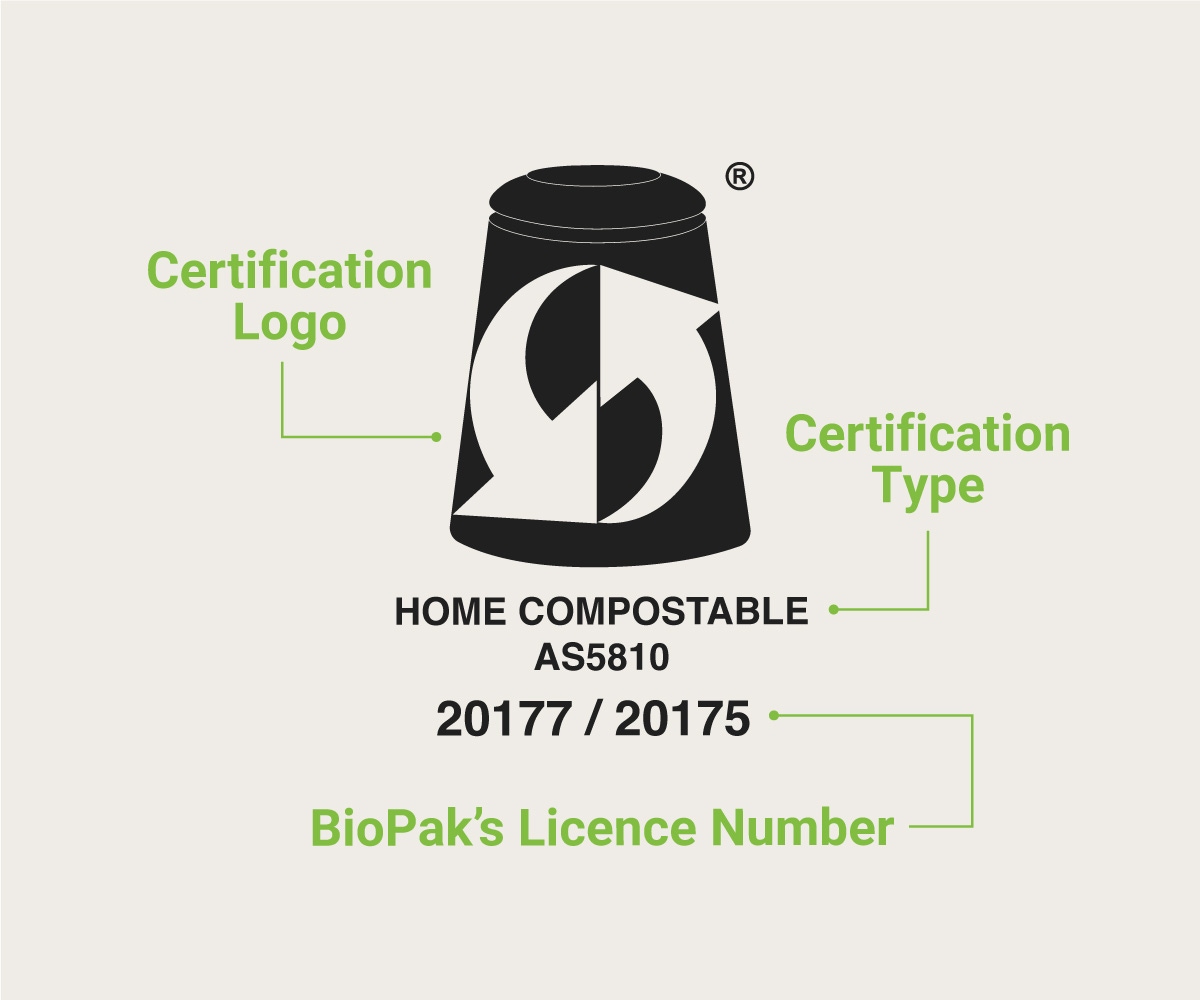

Industrially Compostable to AS4736 Australian Standards
The ABA launched the Industrially Compostable Standard 4736-2006 (which is also known as the ‘seedling logo’ certification system) throughout Australia and New Zealand. The seedling logo clearly identifies packaging materials that can be sent to an industrial compost facility to rapidly biodegrade.
To be certified compostable and carry the seedling logo, suitable biopolymer materials must undergo a costly and stringent test regime outlined by AS4736 and be carried out by recognised, independent and accredited laboratories. For example, this logo is used in Australia for many bioplastic products (like bioplastic lining and bioplastic lids) that must be sent to an industrial composting facility to break down Learn more about this industrial composting certification on the ABA website.
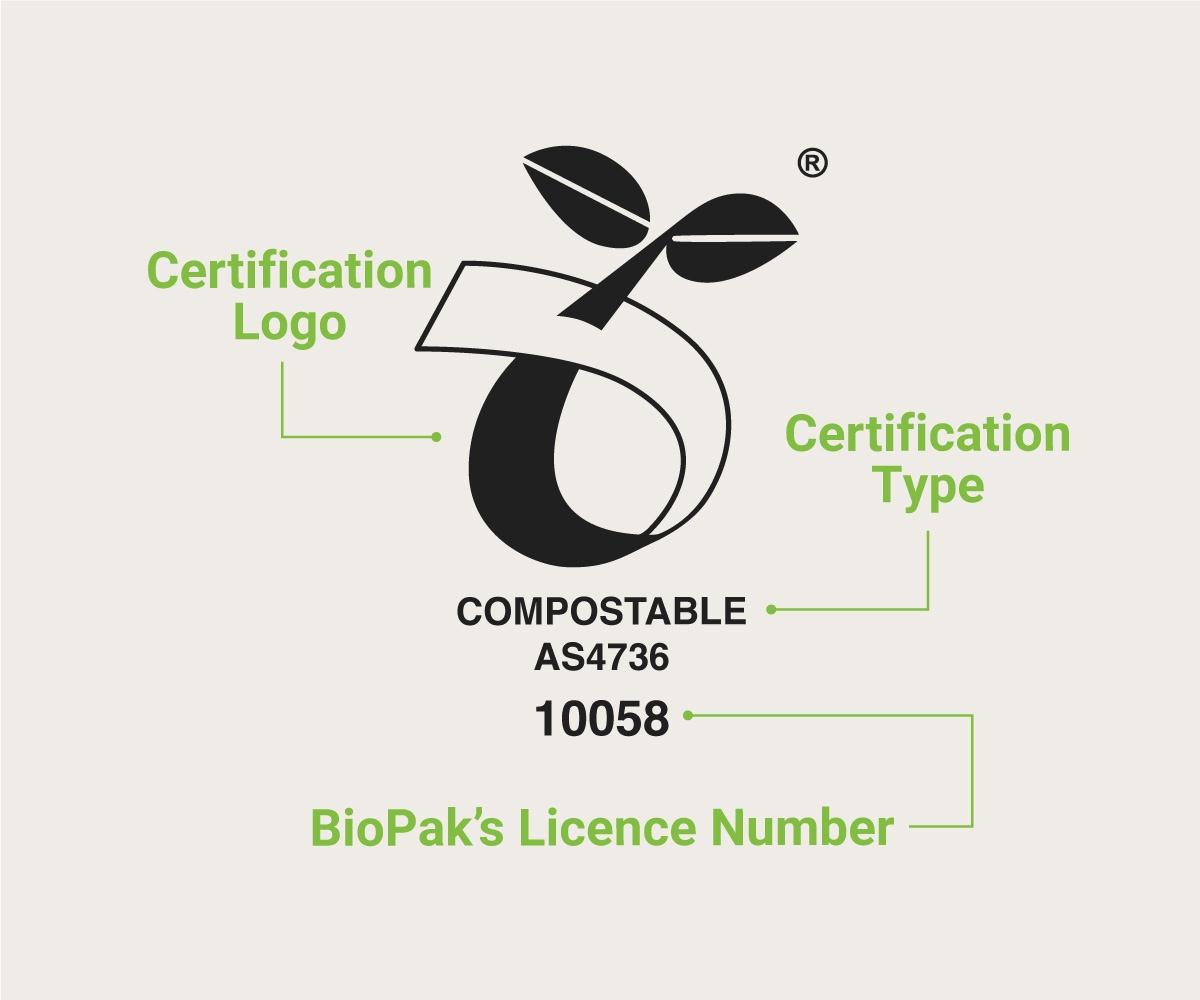

DIN CERTCO European Standard – Home Compostable NF T 51-800
In Europe, the criteria for home compostability is set out by the European standard NF T 51-800. This Home Compostable logo means you can throw the packaging material into your backyard compost bin and it’ll biodegrade.
Unlike Australia, in Europe, several certification bodies can issue the seedling logo and the OK Compost Home Compostable logo (like DIN CERTCO or TUV Austria). Read more about the NF T 51-800 certification on the European Bioplastics website.
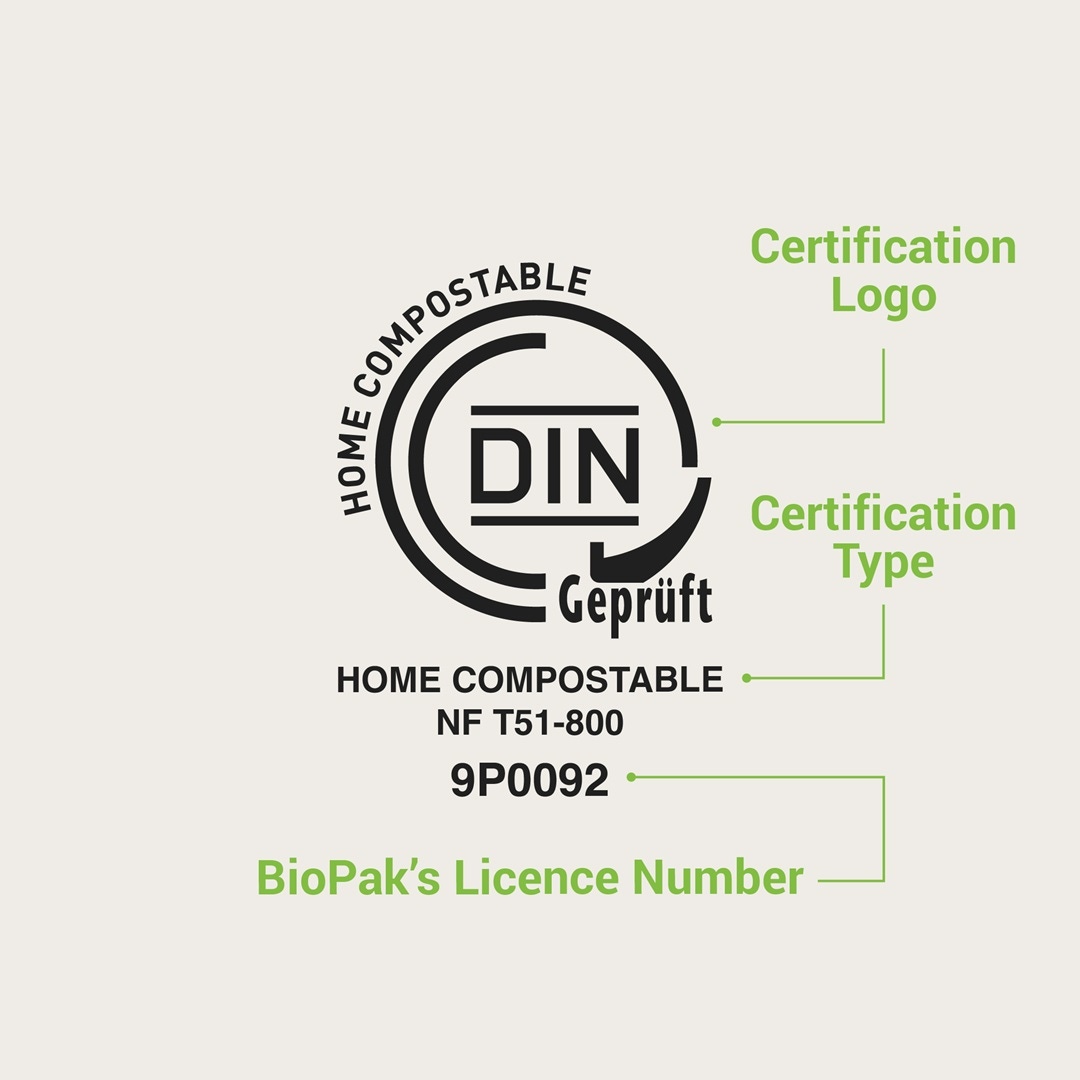

DIN CERTCO European Standard – Industrially Compostable EN 13432
In Europe, the criteria for industrial compostability is set out by the European standard EN 13432. To achieve this standard, the compostable plastics need to disintegrate after 12 weeks and completely biodegrade after six months. That means that 90 per cent or more of the plastic material will have been converted to CO2. The remaining part of the material is converted into water and biomass (valuable compost). Materials and products complying with this standard can be certified and labelled accordingly.
Unlike Australia, in Europe, several certification bodies can issue the seedling logo and the OK Compost Home Compostable logo (like DIN CERTCO or TUV Austria). Read more about the EN 13432 certification on the European Bioplastics website.
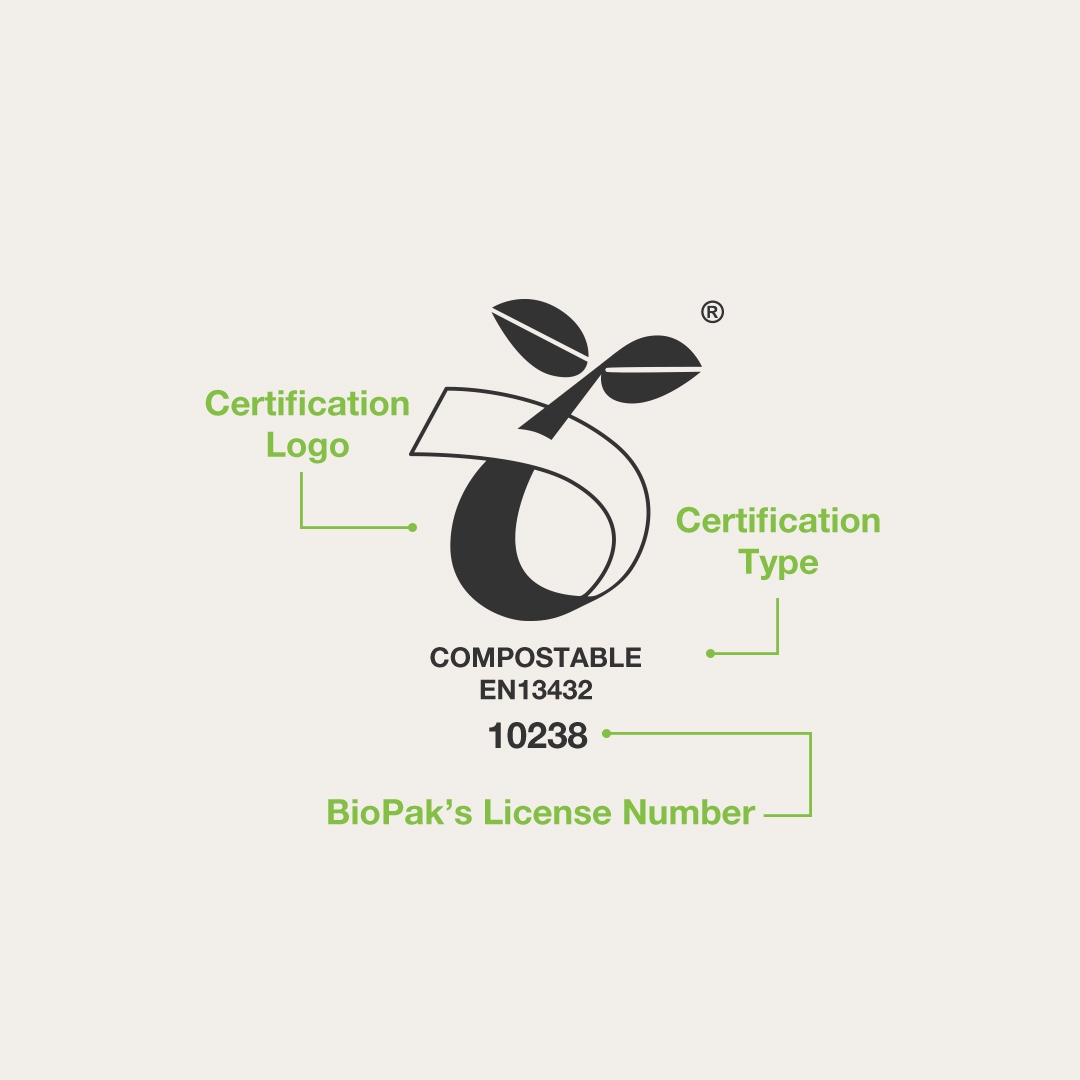

Where To Dispose of Packaging With the Certified Compostable Logos
Industrially Compostable
- In Australia and New Zealand, some councils accept packaging in their Food Organic & Garden Waste (FOGO).
- In the UK, some councils accept packaging in their Food Waste bins.
- Singapore and Hong Kong are yet to develop commercial composting infrastructure that can process compostable packaging. However, businesses can buy or lease an on-site composting unit to process both their food and packaging waste.
Home Compostable
- Your backyard compost
- Community gardens accepting packaging
- Meet your neighbours who are composting
Examples of Greenwashing – Incorrectly Used Compostable Logos
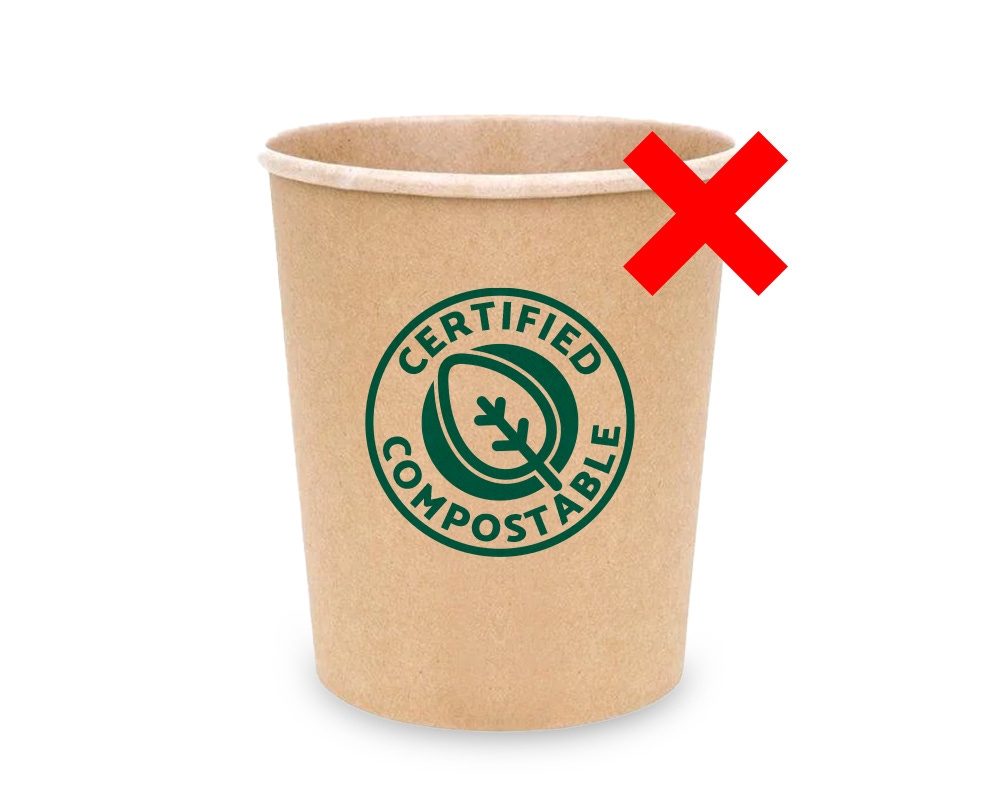

You can see in this example, a company has made their own ‘certified compostable logo.’ This is greenwashing and not verified by the ABA.
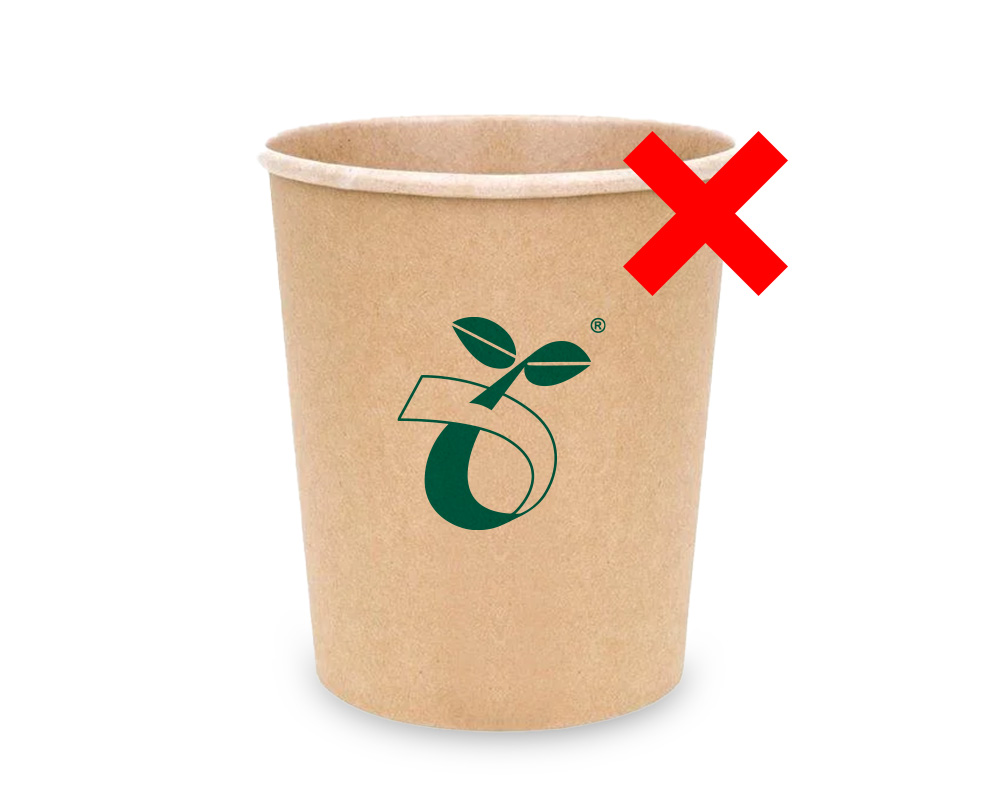

You can see in this example, the company has used the seedling logo but doesn’t have a certification number beneath it. This makes it unclear for the consumer on how to correctly dispose of the product.
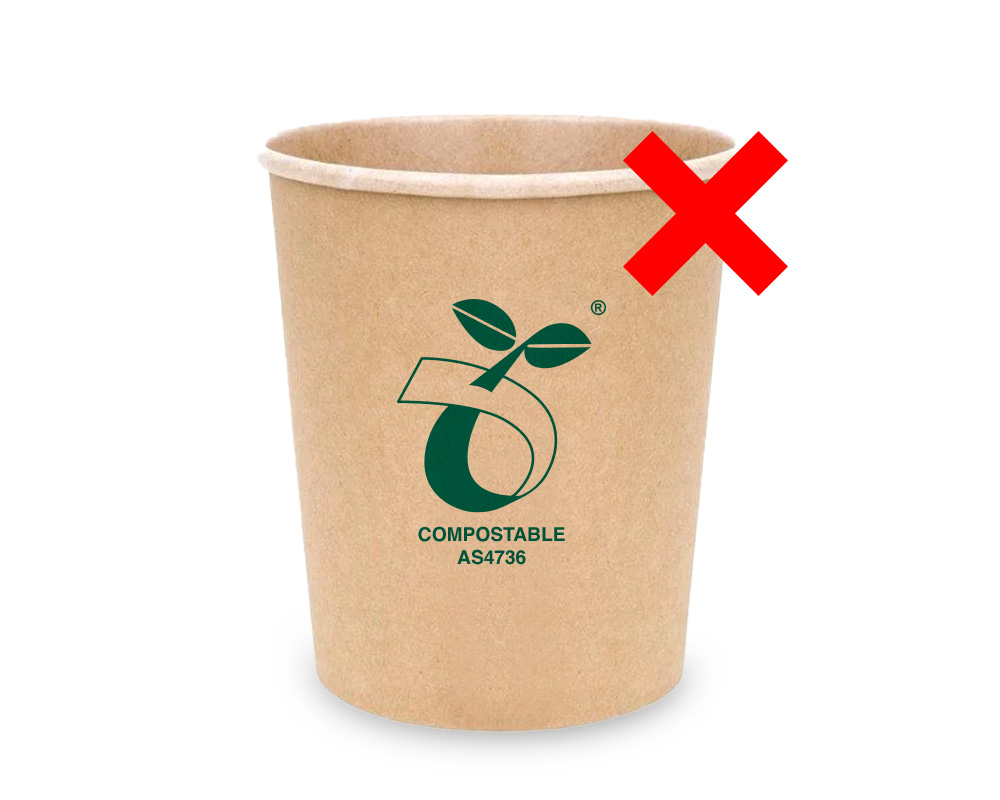

You can see in this example, the company has used the seedling logo and the certification number. However, there’s no company licence number beneath it. This makes it hard to know whether they’re actually certified.
What To Do if Packaging Doesn’t Have The Correct Compost Certification
If you come across one of the above examples, or a product that says ‘compostable’ or ‘biodegradable’ without a compost certification logo to back it up. What do you do?
Remember, products that mimic compostable packaging but aren’t properly certified can contaminate compost.
In industrial settings, it’s difficult for composters to differentiate and remove the non-compostables – which means they end up taking ALL packaging out – even certified compostable products made by companies committed to doing the right thing.
In your home compost, you might dispose of these non-compostable greenwashing products and they won’t degrade properly, having negative effects on your compost bin.
Here’s what to do next.
Compostable
A quick way to verify compostable claims is to search for the company on the ‘who is certified in Aus & NZ’ list on the Australian Bioplastics Association website. You can also search the DIN CERTCO database in Europe.
If a product or company claims to be ‘compostable’ but is not on this list, the item should be sent to landfill. That’s because sending a product that isn’t properly certified to a compost facility could contaminate compost and give a bad name to all the compostable packaging companies doing the right thing.
Biodegradable
The term biodegradable is being used more often as many companies and brands try to up their green credentials – however, the term is often misleading and not to be trusted.
In many countries, a product can’t be ‘certified’ biodegradable. Everything ‘biodegrades’ eventually – it could take days, weeks or hundreds of years. That’s why ‘biodegradable’ is a contentious claim not trusted by the organic recycling industry.
What’s more, some packaging on the market labelled as ‘biodegradable’ (or sometimes ‘OXO-degradable’) is made from conventional plastic but contains additives to help break it down, leaving behind microplastics. Learn more about compostable vs biodegradable.
If an item claims to be ‘biodegradable’ it should be sent to landfill to avoid contaminating compost.
Join Compost Connect
At BioPak, some of our products require industrial composting to break down. That’s why we created Compost Connect – a not-for-profit composting platform connecting foodservice businesses to industrial composters.
It’s simple – business owners can:
- Type in their postcode on the website to find the closest compost partner
- Request a quote to pick up their organic and certified packaging waste
- Schedule regular pick-up days, just like recycling and general waste
Compost Connect is also used to educate consumers on all things composting, while connecting individuals to businesses that compost. You can visit the map on the website to find cafes, restaurants and businesses that are composting. This service is currently available in Australia, New Zealand and the UK.
While there’s limited access to large-scale composting facilities in Hong Kong and Singapore, Compost Connect helps educate businesses about on-site composting systems to reduce their waste sent to landfill, like a system from Green Eco Technologies.











